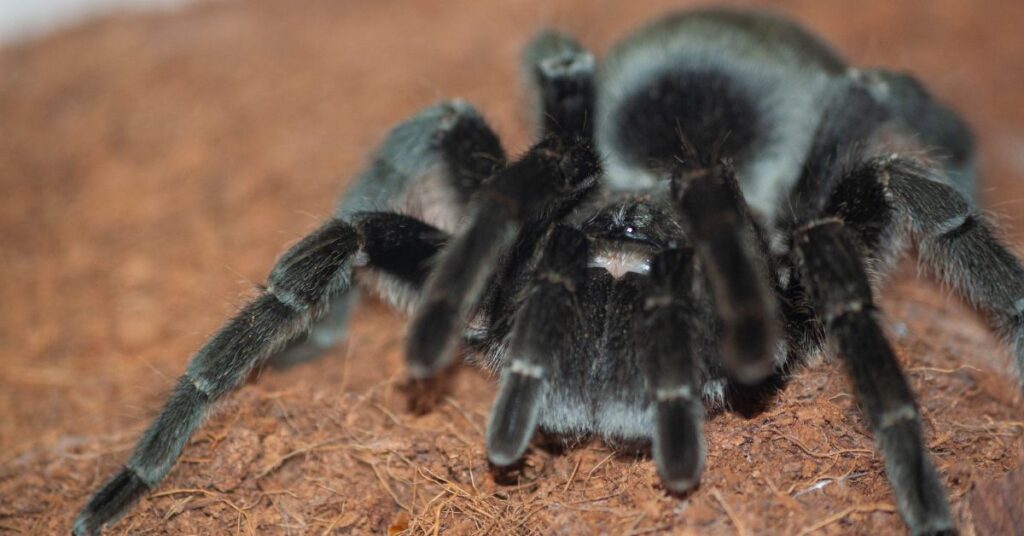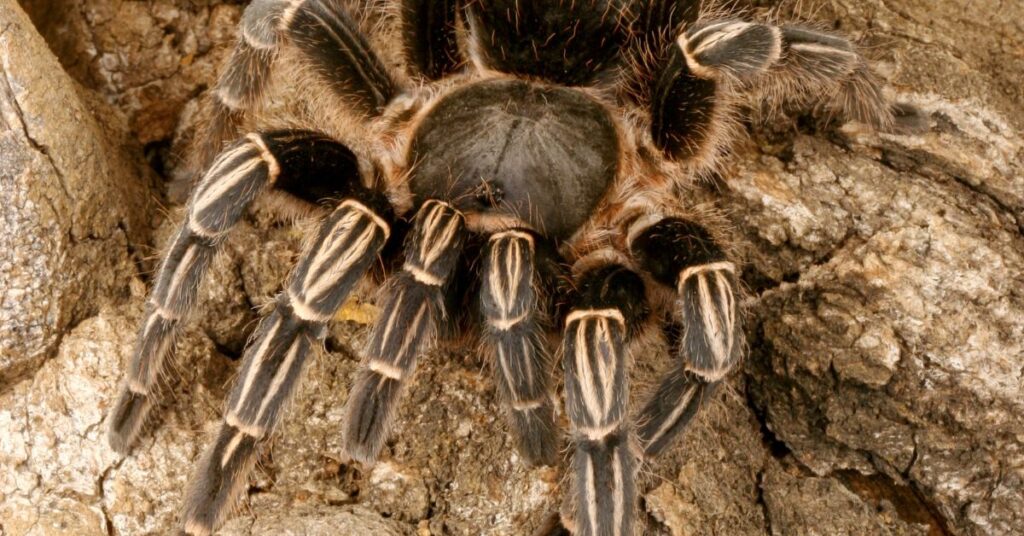
Do tarantulas have bones? It’s a common question and one can easily be confused as to the answer. We’re here to help!
The straight and simple answer is no, tarantulas do not have bones. Much like snakes, tarantulas and spiders have an exoskeleton (external covering) which they shed (moult) to increase their size. This covering provides their body with protection and support.
That’s the basic and quick answer. Keep reading as we find out what an exoskeleton actually is, why a tarantula would need to get rid of it, and more!
Does a Tarantula Have a Skeleton?
Obviously, as we have just established, tarantula’s do not possess bones, therefore they do not possess a skeleton. However, there is a tarantula named after a skeleton, the Ephebopus murinus. Common name Skeleton tarantula.

This is a new world tarantula and named after the skeleton-like markings on its legs.
E. murinus lives mainly on or near the forest floor, where it will build a heavily webbed burrow beneath the topsoil or amongst branches, rocks, and other forest floor debris.
The adult E. murinus usually grows to a leg span of about 11–12 cm (4.5 inches), though females can grow as large as 15 cm (6 inches).
As a defence against potential predators, and in common with many other New World tarantulas, the species of the genus Ephebopus will brush urticating hairs from their bodies.
Uniquely, rather than being located on the abdomen, Ephebopus urticating hairs are located on the palps – on the medial side of the palpal femora; the tarantula sheds these hairs by rubbing the palp against the chelicerae.
What is an Exoskeleton?
An exoskeleton (from Greek έξω éxō “outer” and σκελετός skeletós “skeleton”) is an external skeleton that supports and protects an animal’s body made from chitin.
Exoskeletons contain rigid and resistant components that fulfill a set of functional roles in many animals including protection, excretion, sensing, support, feeding and acting as a barrier against desiccation in terrestrial organisms.
They have a role in defence from pests and predators, support and in providing an attachment framework for musculature.
Why do Tarantulas Possess an Exoskeleton and not a Skeleton?
As previously mentioned, an exoskeleton protects the tarantula from injury, whilst also allowing an impressive range of motion.
It also protects against predators and provides support for their body.
However, exoskeletons aren’t perfect. For example, they cannot stretch nor expand and special modifications are required for gaseous exchange and sensory pick up.
Why Do Tarantulas Molt?
Since exoskeletons are rigid, they present some limits to growth so when a tarantula becomes too large for its current exoskeleton, it molts and leaves this behind.
Not only does the tarantula emerge larger, but some adult tarantulas also become more colourful and vibrant, showing off their mature colours.
They may also appear slightly slimmer after molting due to slight dehydration and the actual molt itself.
We have a full article on tarantula moulting here together with a video showing the process.
How Often Do Tarantulas Molt?
Tarantulas molt roughly every six months. They will start off in premolt, a period that often lasts several months.
However, the actual molting process can take between 15 minutes and a full day.
We hope this has answered your question. It’s a very simple one to answer and doesn’t require a long article. If you have any other questions, why not browse our site and see if we can help with any of your other queries.
Until next time, stay spidery!
